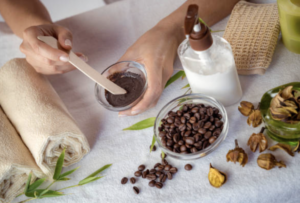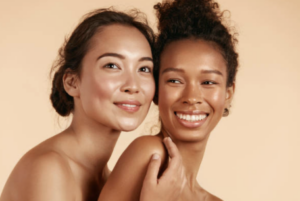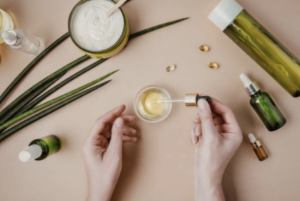A Sensitive Exploration

The clean beauty movement has taken the beauty world by storm. Consumers are increasingly seeking natural ingredients, sustainable practices, and transparency from the brands they support. This shift towards a more mindful and ethical approach to beauty is a positive step forward. However, within this movement lies a complex issue: cultural appropriation.
The Power of Ancient Practices
For centuries, indigenous cultures around the globe have utilized plants, oils, and rituals for beauty and wellness. From turmeric, a cornerstone of Ayurvedic practices in India for millennia, to gua sha, a traditional facial tool in Traditional Chinese Medicine, these practices hold immense cultural significance.
The clean beauty movement has embraced many of these ingredients and rituals. This integration has the potential to be positive, introducing consumers to powerful natural ingredients and fostering a newfound appreciation for diverse beauty traditions. However, the line between appreciation and appropriation can become blurred.
Appropriation vs. Appreciation
Cultural appropriation occurs when elements of a culture are borrowed or adopted by a dominant culture in a way that disrespects or trivializes their original meaning. Here’s where things get tricky:
Exploitation vs. Empowerment: When ingredients are extracted without fair trade or ethical sourcing, local communities are exploited. Clean beauty should empower these communities by ensuring they benefit from the newfound popularity of their traditions.
Acknowledgement vs. Invisibility: Ignoring the cultural significance of ingredients and rituals is a form of appropriation. Clean beauty brands should acknowledge these origins in product descriptions and marketing materials, educating consumers about the rich stories behind these practices.
Trend vs. Tradition: Packaging ingredients and rituals as trendy fads disrespects their cultural significance. Clean beauty should avoid tokenistic imagery and marketing that perpetuates stereotypes.
Let’s explore an example: turmeric. This vibrant yellow spice has been used for centuries in Ayurvedic practices for its anti-inflammatory and skin-brightening properties. When clean beauty brands incorporate turmeric into their products, it’s important to acknowledge its Ayurvedic roots and educate consumers about its traditional uses. This fosters a deeper appreciation for the ingredient and ensures respect for the culture from which it originated.

Building a Respectful Clean Beauty Industry
So, how can clean beauty brands embrace these powerful ingredients and traditions respectfully? Here are some key factors to consider:
Building Ethical Partnerships: Building strong partnerships with local communities is crucial. This ensures fair compensation for ingredients, supports the preservation of traditional knowledge, and fosters a sense of collaboration.
Transparency Throughout the Supply Chain: Clean beauty thrives on transparency. Brands should be open about their sourcing practices, including the origin of their ingredients and the communities they partner with.
Education and Celebration: Clean beauty brands have a responsibility to educate consumers about the cultural significance of the ingredients and rituals they incorporate. Marketing campaigns should celebrate the diversity of beauty practices around the world in a respectful and authentic way.
The Power of Informed Consumers
As consumers, we have a significant role to play in shaping a more inclusive and ethical clean beauty industry. Here’s how you can make a difference:
Become a Research Ninja: Educate yourself about the brands you support. Look for brands that are transparent about their sourcing and committed to ethical practices.
Support Brands that Give Credit: Choose brands that acknowledge the cultural origins of their ingredients and celebrate traditional beauty practices.
Ask Questions, Engage with Brands: Don’t be afraid to ask brands you love about their sourcing practices and how they ensure cultural respect. Your voice matters!
By making informed choices and demanding transparency, we can empower the clean beauty industry to become a force for good, promoting ethical sourcing, cultural appreciation, and a celebration of diverse beauty practices from around the world.

Frequently Asked Questions about Cultural Appropriation in Clean Beauty
Here are some frequently asked questions about cultural appropriation in clean beauty:
- Q: Is it always wrong for clean beauty brands to borrow from other cultures?
A: Not necessarily! Appreciation can be a positive force. The key is to ensure respect is shown by acknowledging the cultural origins, partnering with local communities, and avoiding stereotypes.
- Q: How can I learn more about the cultural significance of beauty ingredients?
A: Many clean beauty brands offer detailed information about their ingredients on their websites. Additionally, there are numerous resources online and in libraries dedicated to exploring different cultural beauty traditions.
- Q: What if a brand doesn’t mention the cultural origins of an ingredient?
A: This can be a red flag. Consider reaching out to the brand directly to inquire about their sourcing practices. You can also choose to support brands that are transparent about their cultural influences.
- Q: Isn’t cultural appropriation just about being politically correct?
A: Cultural appropriation is about respecting the traditions and knowledge of different cultures. It’s about ensuring that these traditions are not trivialized or exploited. By promoting responsible practices, we can foster a more inclusive beauty space that celebrates diversity.
- Q: Can clean beauty ever be truly global?
A: Absolutely! Clean beauty has the potential to be a powerful force for good by promoting collaboration and knowledge exchange between cultures. When done respectfully, it can create a global beauty community that celebrates diverse traditions while ensuring fair compensation and ethical sourcing practices are upheld.

Fostering a More Inclusive and Respectful Beauty Space
The clean beauty movement presents a unique opportunity to create a more mindful and ethical beauty industry. By fostering open conversations, promoting a sense of shared knowledge, and demanding transparency from brands, we can ensure that cultural appropriation is not a pitfall, but rather a springboard for celebrating the rich tapestry of beauty traditions from around the world.
Let’s move forward with a spirit of respect, appreciation, and inclusivity. Remember, true beauty transcends trends and fads. It’s about embracing the unique wisdom and traditions of various cultures, while ensuring that everyone benefits from the power of clean beauty.
What are your thoughts on cultural appropriation in clean beauty? Share your insights and experiences in the comments below!




